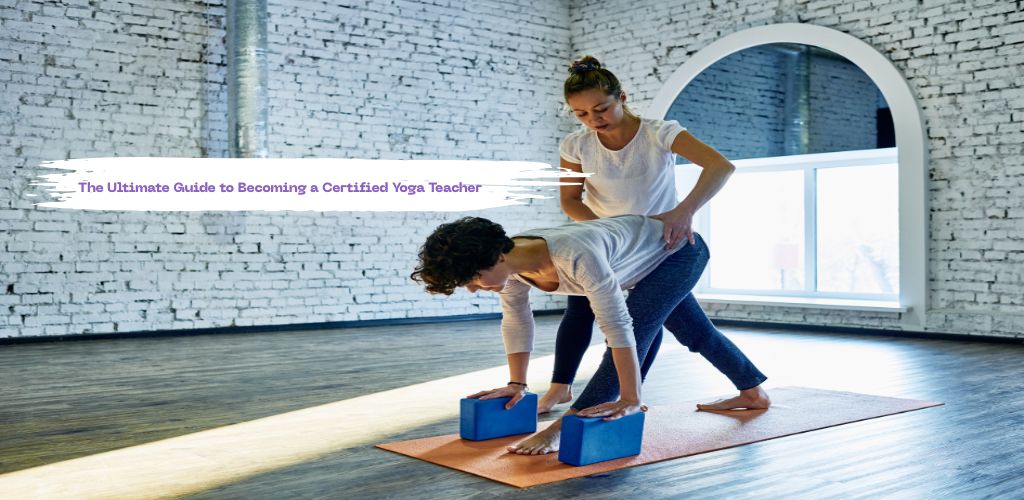Yoga it’s not just a workout — it’s a lifestyle. If you want to deepen your own practice and share it with others, you may be considering earning your yoga certification. With yoga becoming so popular around the globe, there’s no better time to become a yoga instructor. But what exactly does it take to become a certified yoga teacher? In this all-encompassing guide, we’ll show you the crucial steps and secrets of yoga teacher training, and talk about options, such as, yoga teacher training in india and yoga teacher training Bali.
Why Become a Yoga Teacher?
But, before we get into the nitty-gritty of certification, let’s take a look at why you might want to become a yoga teacher in the first place. In fact, we yoga teachers are not only here to help people establish physical strength and discover mental clarity; we serve an important role in leading people to an all-encompassing state of better health.
Here are a few reasons why becoming a yoga teacher could be right for you:
Personal Development: Yoga is all about self-awareness and hodding. In teaching, you go through a process that deepens your own practice while aiding others in developing theirs.
Flexibility: You can work as a yoga teacher in different environments as a studio, school, retreat; you can even work online.
Passion: If you’ve fallen in love with yoga and feel that you need to share it with others, teaching is a place you can direct that passion.
Health Benefits: Better Health Through Ongoing Learning & Physical Exercising: The act of teaching yoga itself is ongoing growth and regular physical exercise for the betterment of health.
Step 1: Determine the Certification Requirements
First step in the process of becoming a yoga instructor is researching the field. Most yoga certifications follow standards established by the Yoga Alliance, a worldwide organization. The basic stipulations for certification are:
- 200-Hour Training: The most standard is the 200-hour teacher training program, which offers the basic knowledge of yoga. This training includes anatomy, alignment, philosophy, ethics, and teaching techniques.
- Teaching Practicum: The majority of programs will have a teaching practicum where you teach classes with supervision to practice in a real class and build confidence.
- Experience: Many schools mandate that you have practiced yoga for a certain period, often at least one year, before admission. You should also have a fundamental comprehension of yoga postures, also known as poses, breathing techniques and meditation.
Step 2: Find the Right Yoga Teacher Training Course
After you’ve determined that you want to take a yoga teacher training, the next step is to find the right program. While there are plenty of choices available worldwide, finding the right one is a challenge. While choosing the program, ensure that:
Location: Do you want to train at a particular location that you draw inspiration from? Think about some training areas, like India yoga teacher training or even a yoga teacher training Bali, which are known for having very active yoga communities and full-on experiences.
Type of Yoga: Various packages specialize in different types of yoga, from Hatha, Vinyasa, Ashtanga, to Kundalini. Select a style you like.
Accreditation: Make sure the program is accredited by some reputable institution, such as the Yoga Alliance etc, to ensure it caters to international quality standards.
Yoga Teacher Training in India
Yoga was born in India and therefore there’s no better place for immersion into the spiritual aspects of Yoga. A yoga teacher training India program allows you to learn in a culture rich with tradition. Here’s what you can expect:
Traditional Roots: Indian yoga training programs for teachers focus on the traditional teachings of yoga such as meditation, mantra chanting and philosophy.
Spiritual Experience: Attending yoga training in India provides you with the opportunity to tap into the spiritual side of yoga that cannot be found in contemporary, Western yoga practices.
Cultural Dive: Beyond training, immerse yourself in the diverse culture, food and spiritual traditions of India.
Rishikesh, Do yoga teacher training in India: some popular destinations for yoga teacher training in India are Rishikesh Dharamsala and Kerala. Rishikesh, sometimes nicknamed the “Yoga Capital of the World”, has become famous for its many spiritual and yoga centers.
Yoga Teacher Training Course in Bali
If you’re seeking a relaxing and tropical atmosphere where you can continue to develop your yoga practice, why not participate in a yoga teacher training in Bali! Bali is the place of an inspired vision for personal and spiritual growth. Here’s why a yoga teacher training course in Bali could be a good fit for you:
Natural Beauty: When it comes to the beauty of the nature Bali is home to picturesque nature such as lush rain forests, idyllic beaches and peaceful rice terraces. The serene surroundings here are great for practicing yoga and meditation.
Retreat Vibes: Retreat Vibes Bali is a relatively mecca for yoga retreats, with plenty that embody the whole wellness package – you know your teacher training will be filled with mindfulness, healthy eating and a lot of chill time.
Global Community: International Community: Bali draws in yogis from all corners of the world so, throughout your training, you will meet people of a similar mindset and make connections within a global yoga community.
Certification Chances are the employee training in Bali experience you’ll be getting will be one of resting and learning, which is why many yoga instructors head to Bali for their training.
Step 3: Complete the Training Program
After selecting your program, it’s time to jump into the training. Yoga instructor training is a full-blown immersion that can often demand everything you have to give to it — every part of you — your body and your mind. Here’s what you’ll typically cover:
Yoga Postures: study and practice yoga postures, their teaching and alignments.
Anatomy and Physiology: Learning the body and effects of yoga on the body.
Pranayama and Meditation: Breathe and learn meditation practices to support your students well-being.
Teaching Methodolgy: Understand how to effectively communicate with students, offer adjustments and create safe environments.
Philosophy: Studying ancient yoga scriptures such as the Bhagavad Gita and Patanjali’s Yoga Sutras.
Look forward to a full daily routine of asana practice, lectures, study & practice teaching.
Step 4: Obtain Certification and Begin Teaching
Upon completion of the course of study, you will need to pass a final examination, likely consisting of written and practical aspects. Once you graduate, you are ready to teach! You may also wish to join the yoga alliance if you want to teach overseas.
Step 5: Continuing Education
A yoga teacher is an individual on a lifelong path. Even after you’re certified you’ll need to learn and grow and develop your skills. Lots of yoga teachers take additional certifications, go to workshop and even get a 500 hour yoga teacher training.
Conclusion
It’s such an exciting fulfilling journey becoming a certified yoga instructor. “Whether you choose yoga teacher training in India to have a soulful experience or looking for all the tranquility amidst tropical asanas in a yoga teacher training course in Bali, both destinations provide great immersive experiences that will make you grow as a practitioner and teacher. Using the process provided in this guide, you are on your way to a fulfilling and successful career as a yoga teacher.
Learn to know more you can join our yoga teacher training in india



